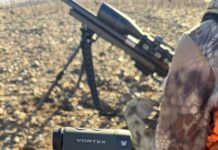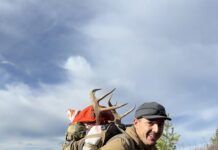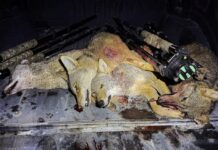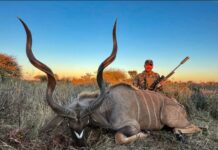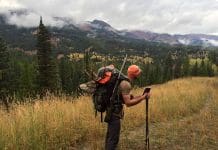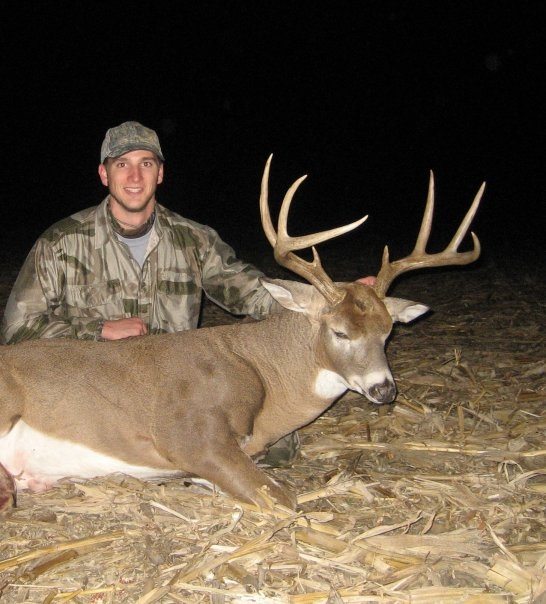
East to West Part II: Preparation Hunts
By Tye Abell, Rokslide Member
In Part I of this series, Planning Your First Western Hunt, I discussed the best method for dialing in the gear for your first Western hunt. In Part II, I’ll dive into another area that is vital to increasing your odds of success, preparation hunts.
You may be questioning what constitutes a “preparation” hunt? It’s rather simple: any hunting trip that takes you more than 6 hours away from your home base to a public land area. These hunts can be beneficial in several ways.
- Gain insight into how well your research methods work
- Test your optics
- Learn where you’re deficient in map reading and navigation.
- If you’re successful and tag an animal, you can practice the gutless method (if legal) and further test your pack’s ability with heavy loads.
- If unsuccessful, you can evaluate how you react to failure on a hunting trip and gain insight into how to keep yourself motivated while on your future Western hunt.
Research Evaluation
The research methods you conduct for you preparation hunt should constantly be evolving. Keep a list of who you contact and what information they provide. A few sources for information include forums, conservation officers, local state biologists, other hunters, and landowners or outfitters in the area. All of these people can provide vital information into many different aspects of the hunt including pressure, animal behavior, population density, preferred food sources, and insight into areas to concentrate on if the individual is generous. You’ll never know what information or advice you can glean from these sources if you don’t take the time to contact them and and at least ask. Too often I read of hunters who only emailed contacts and never received a reply. Pick up the phone and give your contacts a call. Many people are more willing to talk extensively about an area rather than typing a long email or private message.
Optics
One piece of gear not often included in backpacking-only trips are optics. Use your preparation hunts and scouting trips as a chance to evaluate your optics. Are you steady enough to use 10×42 binoculars or larger freehand, or do you need a solid support to allow you to gain a steady sight picture? Are your binoculars giving you a headache after a couple hours on stand?
Your preparation hunts and time on stand glassing for animals can show you these pieces of the puzzle. If you take preseason scouting trips to the area you plan to hunt you can assess your spotting scope and binoculars ability in low light while glassing ag fields. The most mature animals of every species often wait until the final moments of daylight to make an appearance, and your optics’ ability to allow you to see those animals is crucial. As with your other gear, test your optics out beforehand so you’ll have confidence they’ll perform as you expect while in the West.
Map Reading/Orienteering
An often overlooked area of preparation for Western hunting is map reading and orientation. Possessing the ability to quickly glance at a topographical map and interpret what it shows you is very important for navigating terrain in the mountains. There are multiple online map sources available that are very helpful. With the use of these sources you can find slope analyses, private/public land boundaries, potential water sources, camp locations, shadow analyses, elevation profiles and distance calculators; all of which can be incredibly helpful.
Prior to your preparation hunt, download or print maps of your hunting area and use them along with a compass to access the areas you plan to hunt. It would be wise to have a GPS as a backup, but having the skill to read a map and navigate with it and a compass is very beneficial in the West.
Navigating in the dark can be difficult but is often necessary while hunting in both the East and West. Successfully navigating in the dark with a headlamp can be tricky, and your preparation hunt can show you areas in which you struggle with that task or if you need a more powerful light source. You can gain valuable experience in finding your stand location or way back to your vehicle in the dark while hunting whitetails that will directly translate to finding your glassing location in the predawn darkness, or your camp after dusk while in the West.

Gutless Method
If that term is new to you, there are good videos on the method and a quick search on the Rokslide forums will link you with people who can give good advice on going “gutless”. If you are successful during your preparation hunt, and it’s legal in the state you are hunting, I highly suggest you practice the gutless method of breaking an animal down. This will give you the opportunity to test your kill kit and make sure you have the items you need for this important task. The gutless method is rarely used in the East, but if legal, I highly prefer it to loading a big mature whitetail on a cart and hauling it through the woods, or worse yet, dragging the animal any distance. In many areas of the West, it is near impossible to drag an animal even a few hundred yards, even if you’re accustomed to dragging them several miles in the lower elevation gentler country of the East.
Once you’ve got the animal broken down, take the opportunity to load up your pack heavily with meat and see how it performs for you in terrain with a heavy load. Deboning the quarters will lighten your loads and give you another tool in your experience toolbox to use while in the West.
Determining What Animal to Pursue
Patience can be an important trait to possess while hunting some species, but may not be critical for others. Long hours in the whitetail stand can provide insight into how patient you’ll be during your Western hunt. Will you be able to spend multiple hours in one glassing location searching for a bedded mule deer, or will you be better served staying mobile and using a call to entice a bugle from a rutting bull? Mule Deer and Elk often require different tactics; your preparation hunt can allow you to determine which species you may be best suited to hunt.
With my own preparation hunts occurring during the whitetail rut, I rarely left my stand from dawn to dusk, 12-13 hours on stand were the norm. With that knowledge, sitting and glassing a mountain basin for hours trying to find a bedded mule deer buck was something I knew I could handle.
Attitude Evaluation
Being away from your family can be surprisingly difficult, especially when a hunt isn’t going as you had originally envisioned. Other hunters may be in the area you had planned to hunt, the animal population may be lower than you anticipated, or any other of a myriad of potential problems may crop up. All of these issues will test you mentally and reveal traits of your personality you were previously unaware of. Evaluate your attitude before, during, and after the hunt. This will help you stay ahead of any attitude problems that you might encounter once you head West and are truly isolated from family and the comforts of home.
Keeping a positive mindset and remembering that a mature animal can appear at any moment will help you hunt more effectively. If you have hunting partners that you plan to go West with, do everything you can to have them along on your preparation hunts. You’ll learn a great deal about how they react to adversity. This will help you determine whether or not you’ll want them with you when times get tough out West, as they most often do.

Dealing with Failure
Ultimately, the goal is to be successful, but the truth of the matter is more hunters come home empty handed from out-of-state hunting trips than those who return successful. Learning to deal with that lack of success can be just as important as any other aspect of a preparation hunt.
Keep a notebook detailing the hunt and evaluate it after the trip has come to a close. If you were unsuccessful, did you leave completely dejected, or did you leave with a renewed sense of desire to come back and give it another shot? I often find that if unsuccessful, my initial feelings are of despair, but within a week or two, I’m already chomping at the bit to give it another shot.
Know your strengths and weaknesses before you head West by undertaking at least one preparation hunt; you’ll gain knowledge of yourself, your gear, and potentially even your hunting partners that can make or break your first hunt.
In the final part of this series, Putting It All Together, I’ll discuss my past experience as it relates to both backpacking and preparation hunts that allowed me to successfully take a respectable buck on my first Western hunt for mule deer in Wyoming.
You can discuss this article or ask the author questions here
Read Part III here
If you missed Part I of this series, click here

